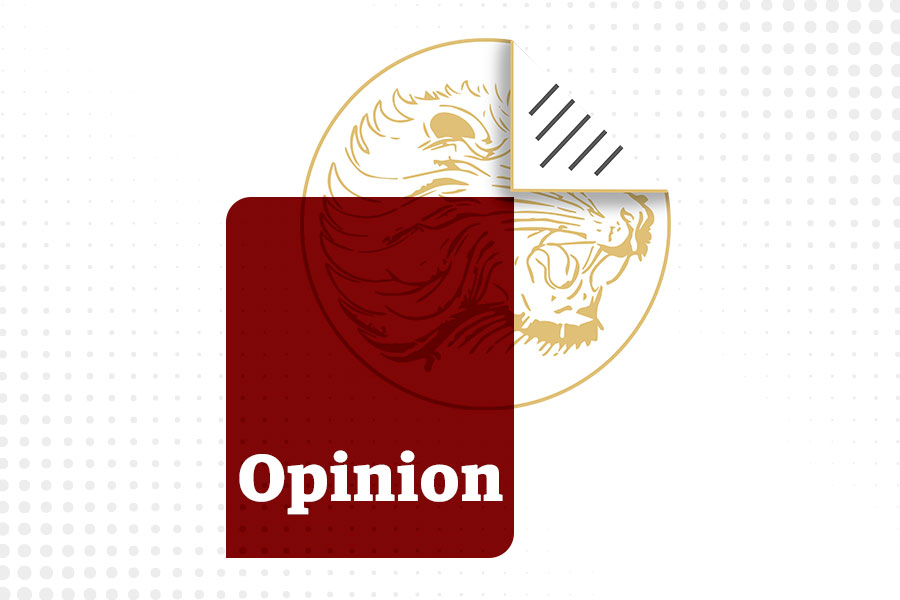
My Opinion | 131584 Views | Aug 14,2021
Dec 28 , 2024
By Kidist Yidnekachew
A casual Friday conversation with my friend revealed a disheartening truth about workplace dynamics and societal expectations surrounding clothing. She recounted how her colleagues' behavior shifted dramatically depending on her attire. Colleagues who regularly greeted her would completely ignore her if she wore comfortable clothes, a simple shirt and pants, or a hoodie and sneakers. The same individuals, upon seeing her in a dress with subtle makeup and heels, would suddenly become overly friendly, showering her with attention and fawning over her. This was not a one-time occurrence. She had experienced this inconsistent treatment for years, each instance leaving her surprised and, frankly, insulted. One colleague, who had not spoken to her in over a year, approached her the moment she dressed up. Her choice to ignore him was entirely justified, a response to the superficiality of their interactions.
This inconsistency in treatment is deeply troubling. While first impressions matter, and we all judge people to some extent based on appearance, a reality tied to our visual nature and attraction to beauty. This should not dictate relationships with colleagues, friends, or family. These are people who know the individual beyond their clothing and should value the person, not the presentation. The fact that her colleagues' behavior was so overtly influenced by her clothing shows a disturbing shallowness. It is not just about professional courtesy. It is about basic human respect.
My friend’s experience was not confined to the workplace. She told similar instances outside of work, reflecting a broader cultural issue. This resonated with the familiar Ethiopian folktale of Ababa Gebrehana, which illustrates how even a respected figure’s reception could be determined by his attire. In the tale, he was initially denied entry to a wedding due to his clothing but later gained access after changing. Upon entry, he smeared food on his clothes, indicating the role they played in his acceptance. The story underscores the cultural weight placed on clothing in Ethiopian society. While certain occasions call for specific dress codes, people often prioritise appearance, even when financial resources are limited. People sacrifice to appear prosperous, reflecting the societal pressure to project a certain image through clothing.
My curiosity about the strong emphasis on clothing led me to question whether this was a uniquely Ethiopian phenomenon. I asked several friends from diverse international backgrounds about the societal significance of attire in their home countries. One friend from America shared a different experience. They described a culture where personal attire held minimal social weight. Individuals could comfortably go about daily life in clothing that might be considered unconventional. Wearing something as simple as a potato sack, they explained, would provoke little to no reaction. This casual disregard for clothing choices was widespread and deeply ingrained in their society.
Another friend from Denmark corroborated this observation. Their approach to clothing reflected the same cultural norm; they exhibited nonchalance toward their appearance, often wearing flip-flops and shirts with visible holes. When the imperfections in their clothing were pointed out, their response was simple and unbothered: "It is my favorite shirt." They explained that this attitude was not a reflection of carelessness but a prioritisation of comfort and personal preference over societal expectations. While they would dress up for formal occasions, their daily attire was practical and comfortable, consisting of shirts, shorts, and sandals.
This contrast to my own experiences was striking. I recalled times when I dressed up even for the simplest errands, like visiting the small shop downstairs in my building. The effort of selecting the right outfit, ensuring it was clean and presentable, and coordinating accessories often felt mentally exhausting. Hearing my friends’ perspectives was liberating. It revealed the possibility of releasing the pressure to always maintain a polished appearance, especially when unnecessary. Their experiences show the mental and emotional burden tied to societal expectations around clothing.
Their freedom from these constraints offered a valuable lesson: to prioritise personal comfort and well-being over the often-superficial demands of societal norms. It underscored the importance of balancing self-expression with the need to step away from external pressures to conform.
The superficiality of judging individuals solely based on their clothing is undeniable; it is no different from judging a book by its cover, a practice we often criticise. Yet, the reality remains that we are visual creatures, naturally drawn to aesthetics. This, however, does not excuse the inconsistent and often disrespectful treatment my friend experienced. The audacity of some colleagues to dictate her attire, as if her existence hinged on pleasing them, is particularly troubling. Her choice of clothing reflects her mood and personal preferences and should be respected as such.
The contrasting behavior she faced highlights a deeper societal issue; the prioritisation of outward appearance over authentic human connection. This mindset needs to shift. We must strive to value people for who they are, not for what they wear.
PUBLISHED ON
Dec 28,2024 [ VOL
25 , NO
1287]


My Opinion | 131584 Views | Aug 14,2021

My Opinion | 127940 Views | Aug 21,2021

My Opinion | 125915 Views | Sep 10,2021

My Opinion | 123539 Views | Aug 07,2021

Dec 22 , 2024 . By TIZITA SHEWAFERAW
Charged with transforming colossal state-owned enterprises into modern and competitiv...

Aug 18 , 2024 . By AKSAH ITALO
Although predictable Yonas Zerihun's job in the ride-hailing service is not immune to...

Jul 28 , 2024 . By TIZITA SHEWAFERAW
Unhabitual, perhaps too many, Samuel Gebreyohannes, 38, used to occasionally enjoy a couple of beers at breakfast. However, he recently swit...

Jul 13 , 2024 . By AKSAH ITALO
Investors who rely on tractors, trucks, and field vehicles for commuting, transporting commodities, and f...

Jun 28 , 2025
Meseret Damtie, the assertive auditor general, has never been shy about naming names...

Jun 21 , 2025
A well-worn adage says, “Budget is not destiny, but it is direction.” Examining t...

Jun 14 , 2025
Yet again, the Horn of Africa is bracing for trouble. A region already frayed by wars...

Jun 7 , 2025
Few promises shine brighter in Addis Abeba than the pledge of a roof for every family...

Jun 29 , 2025
Addis Abeba's first rains have coincided with a sweeping rise in private school tuition, prompting the city's education...

Jun 29 , 2025 . By BEZAWIT HULUAGER
Central Bank Governor Mamo Mihretu claimed a bold reconfiguration of monetary policy...

Jun 29 , 2025 . By BEZAWIT HULUAGER
The federal government is betting on a sweeping overhaul of the driver licensing regi...

Jun 29 , 2025 . By NAHOM AYELE
Gadaa Bank has listed 1.2 million shares on the Ethiopian Securities Exchange (ESX),...